Honey processing is an essential industry for many countries and regions worldwide. A honey processing plant is a facility that takes raw Honey and processes it into various forms, such as liquid Honey, creamed Honey, and comb honey. This blog will look at a detailed project report on a honey processing plant. Let’s check out the honey processing plant project report below.
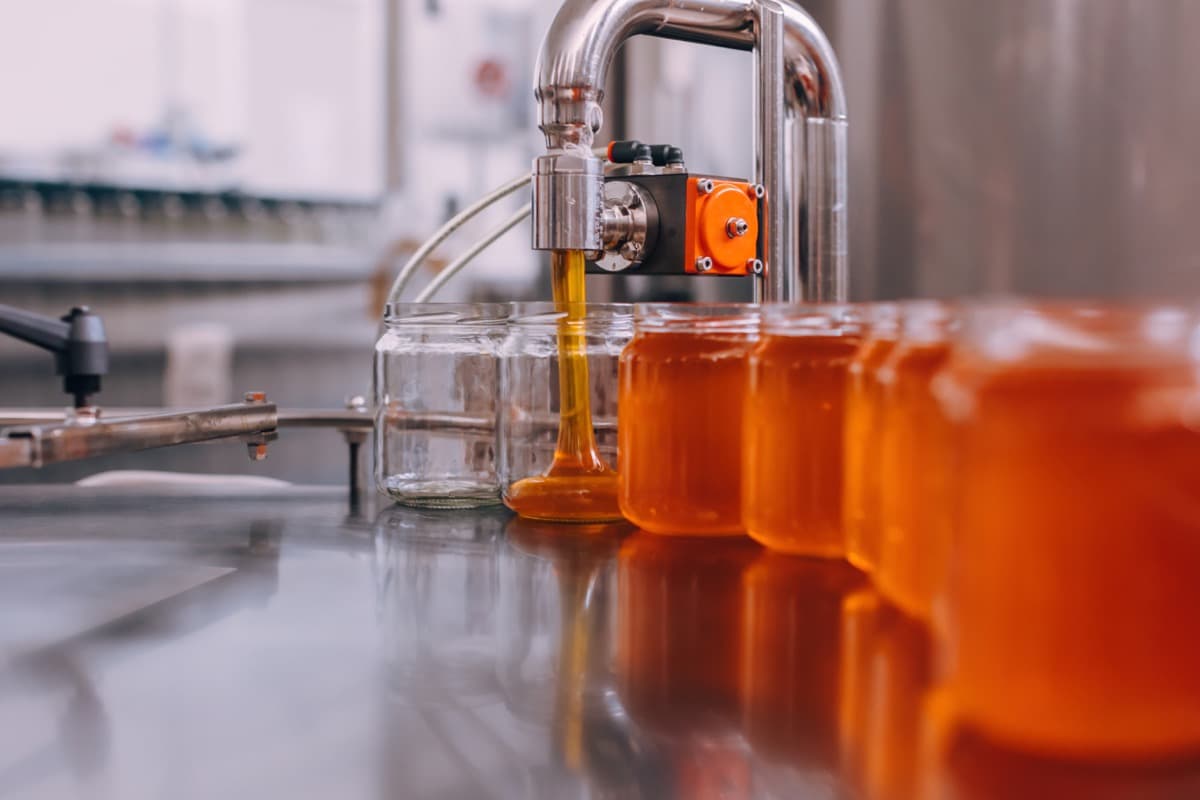
We will cover all aspects of the project, including market research, the manufacturing process, machinery and equipment, financial projections, and more. By the end of this blog, you will have a comprehensive understanding of what it takes to set up and operate a successful honey processing plant. So, let’s get into it!
Introduction to Honey products
In a honey processing plant, raw Honey is collected from bee hives and then undergoes a series of steps to remove impurities, stabilize the Honey, and package it for distribution. The processing methods can vary depending on the type of Honey being produced but typically include filtering, centrifuging, and heating the Honey to remove impurities and kill any bacteria or yeasts that may cause fermentation. The Honey is then cooled and packaged into different forms such as bottles, jars, or comb honey.
Honey is a natural sweetener rich in immunity, antioxidants, minerals, and vitamins. It is considered to have many health benefits, such as helping to strengthen the immune system, reducing inflammation, and promoting wound healing. Additionally, Honey is used in a wide range of food and cosmetic products, from traditional medicines to bakery items and drinks.
Beekeeping is an important industry that provides Honey as a natural sweetener and helps pollinate crops and plants. The beekeeping industry is particularly well-suited to regions with sufficient bee flora available for at least six months of the year. In India, the Honey produced by Indian hive bees is collected by modern extractors. Still, to maintain the quality and value of Honey, it is essential to process it in a modern honey processing plant.
In case you missed it: Honey Dew Papaya Farming in India: How to Start, Care, Pest, and Disease Management
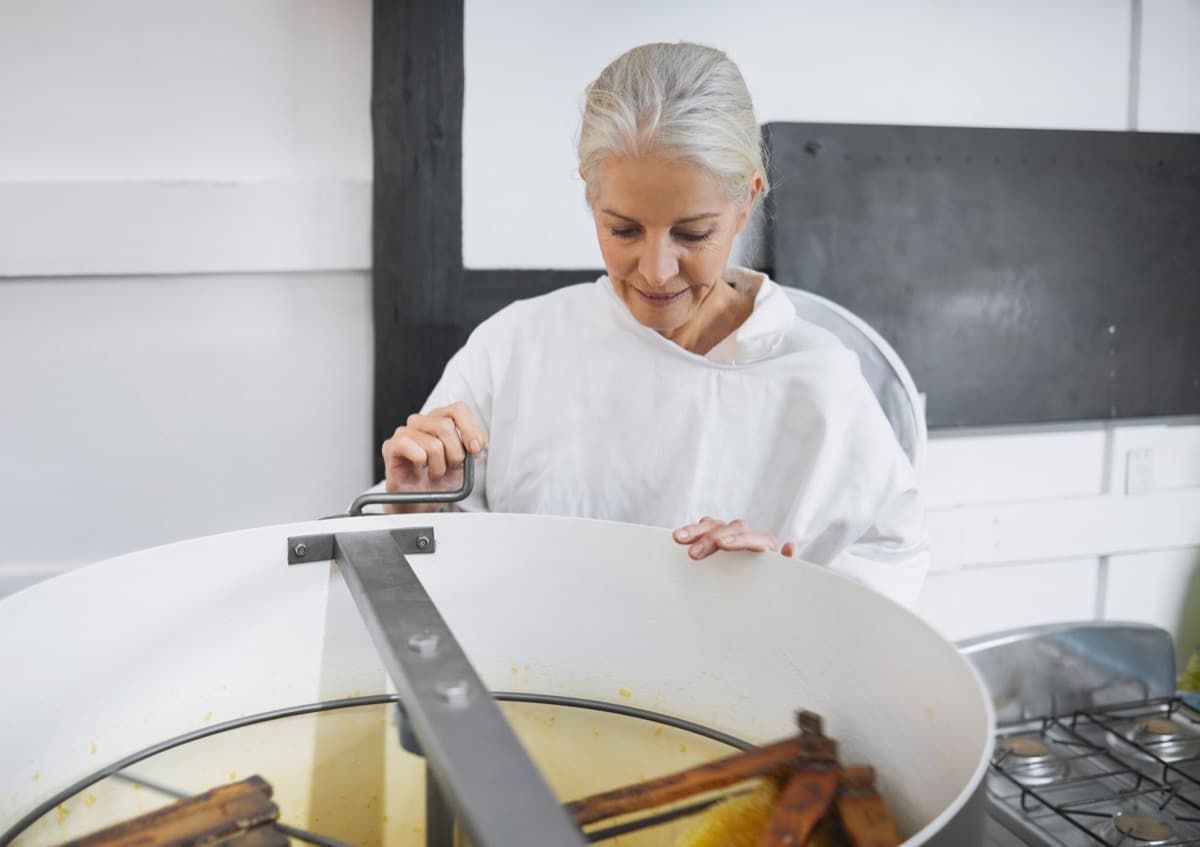
About Honey Bee farming and Honey production
Honey farming, also known as beekeeping, is keeping and managing bee colonies to produce Honey and other products, such as beeswax and propolis. Honey production is collecting, processing, and packaging honey from bee colonies. Honey farming is considered sustainable and environmentally friendly, as bees are vital in pollinating crops and plants.
Beekeeping can be done on a small scale, with a few hives in a backyard, or on a large scale, with hundreds or thousands of hives spread out over multiple locations. The honey production process begins with the beekeeper installing bee colonies in an area with good bee flora. The bees collect nectar from flowers and convert it into Honey, which they store in the hive.
The beekeeper then harvests the Honey by removing the honeycomb frames from the hive and using a honey extractor. After extraction, the Honey is filtered to remove impurities such as beeswax and bits of the comb. It is then heated to a specific temperature to kill any bacteria or yeasts that may cause fermentation. The Honey is then cooled and packaged into different forms such as bottles, jars, or comb honey.
Market potential/ Market scenario of Honey production
Honey is a widely consumed product in the domestic and international markets, with high demand for high-quality, refined Honey free of pesticides and other agrochemicals. In the domestic market, the majority of Honey is used by the pharmaceutical and confectionery industries. Still, with an increasing focus on health and wellness, there is also a growing demand for Honey as a healthy food.
India is a significant player in the international honey market, with over 50,000 metric tonnes of natural honey exports worth approximately Rs. 653.58 crore/ $101.32 million in the 2017-2018 fiscal year. The major export destinations for Indian Honey include USA, UAE, Canada, and Qatar. The market for Honey in India and around the world is expected to continue growing, driven by increasing demand for natural sweeteners and the health benefits associated with honey consumption.
Process of honey extraction in processing plant
The honey industry is a complex process that involves multiple steps to ensure the quality and safety of the final product. Each step, from initial extraction to packaging, is designed to address specific challenges related to the physicochemical and biological characteristics of different types of Honey.
Steps in Honey processing plant
- Initial Extraction
- Dehumidification
- Liquefaction and mixture
- Heating
- Pasteurization
- Crystallization
- Final packaging
In case you missed it: 17 Key Rules for Effective Beekeeping Management: Basic Tips for Profitable Honeybee Farming
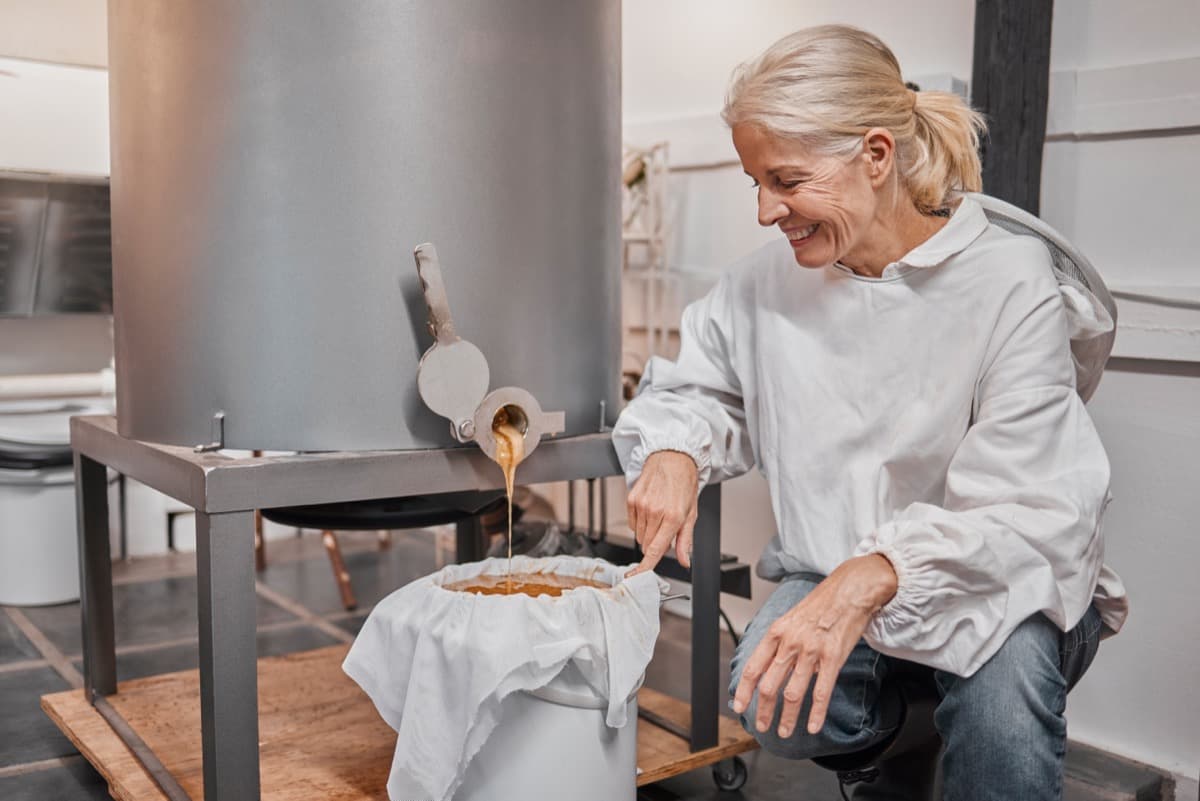
Honey extraction: The initial harvest of Honey is done by introducing honeycombs or frames into a honey extractor. The extractor uses centrifugal force to remove the Honey from the comb. This operation is done in special rooms with the possibility of heating.
Collection and decantation: After the extraction, the Honey is collected by gravity in tanks. The Honey is then sent to decanters with the help of pumps. This process aims to eliminate wax particles and air bubbles that may have been mixed with the Honey during extraction.
Purification techniques: The purification of Honey is done through decanting and filtration. These techniques are essential for ensuring the quality of the final product, primarily when the Honey is intended for medical use. The quality of Honey can be negatively affected by various factors, and precautions should be taken to ensure that the final product meets physicochemical and microbiological standards, especially for medical purposes.
Bottling and packaging: The processed Honey is immediately bottled in clean wide-mouthed bottles and sealed with PP caps. The bottles are then wiped dry and labeled. The filled, sealed, and labeled bottles are then packed in labeled cardboard boxes before they are ready for commercialization.
Honey processing plant project report: Economics of project
The project assumptions for honey production include a capacity of 80 kg per hour with 55% utilization in the first year, 8 hours of daily operation, raw material stock for seven days, finished goods closing stock for ten days, credit periods of 6 days for debtors and ten days for creditors, depreciation and income tax, 11% interest on working capital and term loans, current market rates for salary and wages, power consumption of 25 KW, and a yearly increase of 5% for sales and raw material cost.
Computation of production of Honey
The Production of Honey is based on a machine capacity of 80 kg per hour, 8 hours of daily operation, 25 working days per month, 300 working days per year, 8% wastage, and a raw material requirement of 192000 kg. The final output after accounting for wastage is 176640 kg per year, which will be packaged in 1 kg for a total of 176640 packets per year. The Production of Honey is based on a capacity of 80 Kg per hour.
Production capacity is increase (Expected)
- Year 1: 55% (97,152 kg)
- Year 2: 58% (1,02,451 Kg)
- Year 3: 60% (1,05,984 kg)
- Year 4: 60% (1,05,984 kg)
- Year 5: 62% (1,09,517 kg).
Raw material cost for producing Honey
- Year 1: 55% utilization at a rate of Rs.178/kg (amounting to Rs.187.97 lacs)
- Year 2: 58% utilization at a rate of Rs.187/kg (amounting to Rs.208.24 lacs)
- Year 3: 60% utilization at a rate of Rs.196/kg (amounting to Rs.225.79 lacs)
- Year 4: 60% utilization at a rate of Rs.206/kg (amounting to Rs.237.31 lacs)
- Year 5: 62% utilization at a rate of Rs.216/kg (amounting to Rs.257.13 lacs)
In case you missed it: How to Start Honey Bee Farming/Beekeeping from Scratch: A Complete Guide for Beginners
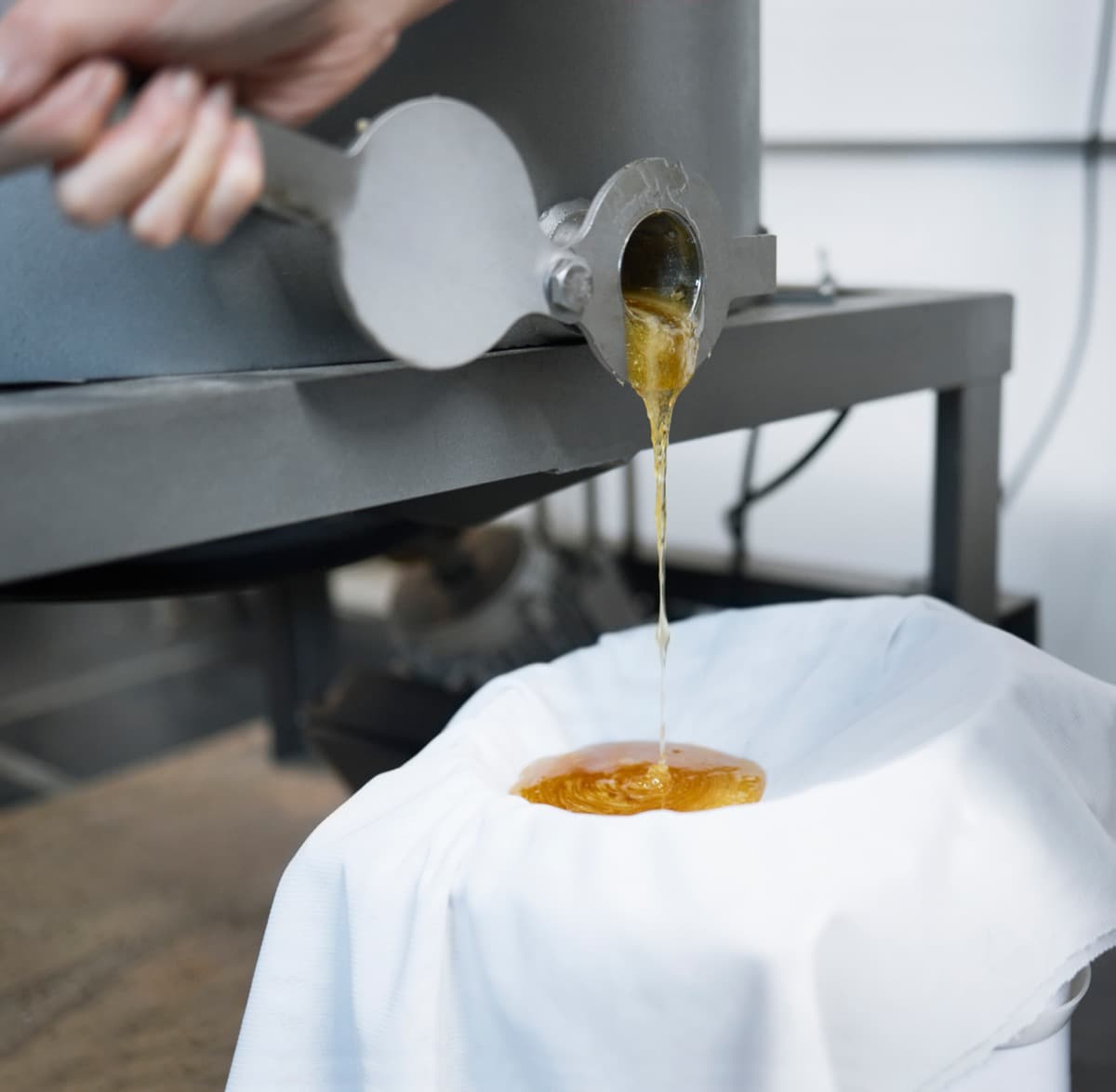
Computation of sale for honey production
- 1st year: Opening Stock of 3,238 Kg, Production of 97,152 Kg, closing stock of 3,238 Kg, and net sale of 93,914 Kg at a sale price of Rs 250/packet (amounting to Rs 234.78 lacs)
- 2nd year: Opening Stock of 3,415 Kg, Production of 1,02,451 Kg, closing stock of 3,415 Kg, and net sale of 1,02,275 Kg at a sale price of Rs 263/packet (amounting to Rs 268.98 lacs)
- 3rd year: Opening Stock of 3,533 Kg, Production of 1,05,984 Kg, closing stock of 3,533 Kg, and net sale of 1,05,866 Kg at a sale price of Rs 276/packet (amounting to Rs 292.19 lacs)
- 4th year: Opening Stock of 3,533 Kg, Production of 1,05,984 Kg, closing stock of 3,533 Kg, and net sale of 1,05,984 Kg at a sale price of Rs 290/packet (amounting to Rs 307.35 lacs)
- 5th year: Opening Stock of 3,651 Kg, Production of 1,09,517 Kg, closing stock of 3,651 Kg, and net sale of 1,09,399 Kg at a sale price of Rs 305/packet (amounting to Rs 333.67 lacs).
Total liabilities table for honey processing plant
| Year | 1 | 2 | 3 | 4 | 5 |
| Production Capacity (kg) | 97,152 | 1,02,451 | 1,05,984 | 1,05,984 | 1,09,517 |
| Utilization (%) | 55 | 58 | 60 | 60 | 62 |
| Raw Material Cost (Rs/kg) | 178 | 187 | 196 | 206 | 216 |
| Raw Material Cost (Lacs) | 187.97 | 208.24 | 225.79 | 237.31 | 257.13 |
| Opening Stock (kg) | 3,238 | 3,415 | 3,533 | 3,533 | 3,651 |
| Closing Stock (kg) | 3,238 | 3,415 | 3,533 | 3,533 | 3,651 |
| Net Sale (kg) | 93,914 | 1,02,275 | 1,05,866 | 1,05,984 | 1,09,399 |
| Sale Price (Rs/packet) | 250 | 263 | 276 | 290 | 305 |
| Sale Revenue (Rs) | 234.78 | 268.98 | 292.19 | 307.35 | 333.67 |
Capacity, utilization, production & output of Honey processing plant
Machinery and equipment
- Water Treatment Unit: Equipment used to treat water to make it safe to drink, operated, and monitored by plant operators.
- Boiler: Steam-generating equipment that generates and delivers steam at the required temperature and pressure.
- Stainless Steel Tank: Used to store liquids and particulate solids.
- Jacketed Storage Tank: A container designed to control the temperature of its contents using a circulating cooling or heating fluid.
- Semi-Automatic Single Head Machine: Filling machine for viscous products, with a piston-operated filling system and adjustable tray.
- Air Compressor: 3.0 HP machine used to compress air.
- Bottling Plant: machines used to wash, dry, fill, cap, sterilize, and package bottles.
- Testing Equipment: Different equipment is used to test the quality of the final product, such as a lactometer and gravity meter.
- Weighing Balance: Simple weight measuring device used to determine the weight of an object using standard weights.
In case you missed it: How this Woman Made 2 Lakh per Month from Beekeeping: A Success Story of Honey Bee Farmer
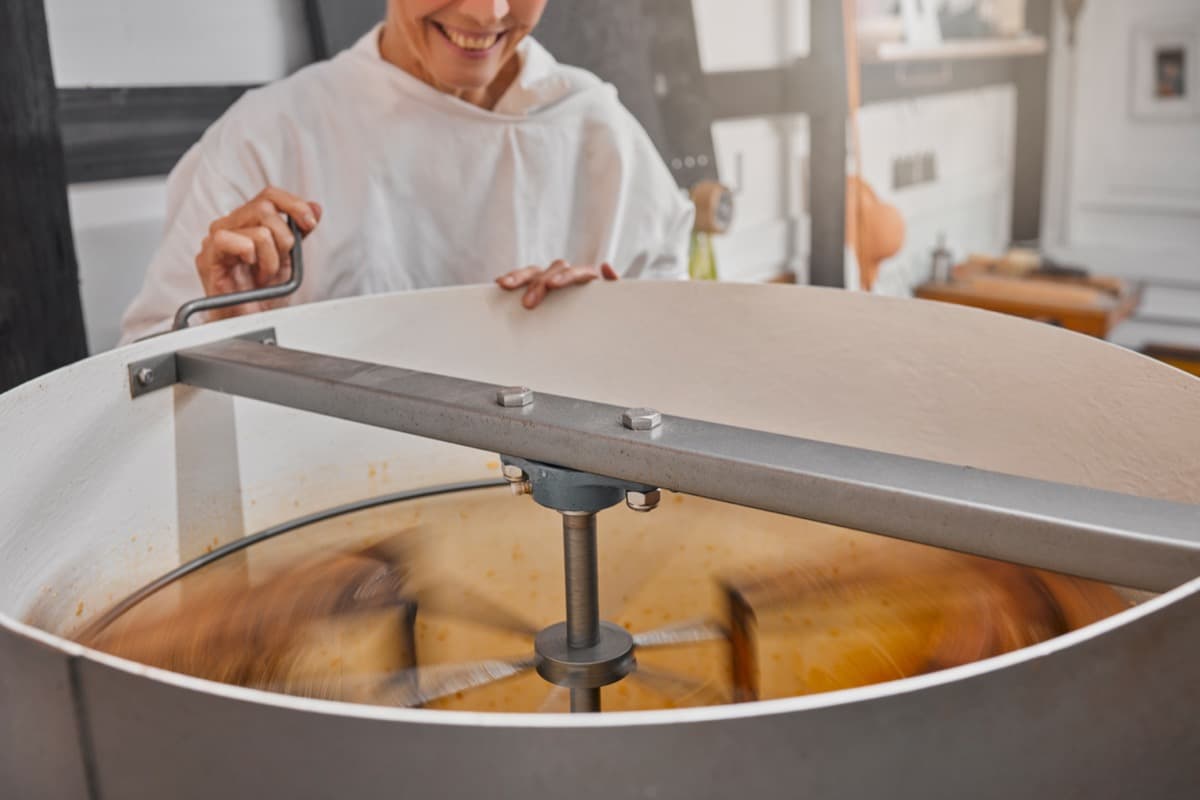
Total cost of the project of the Honey processing plant:
Working capital: Working capital for a Honey processing plant refers to the funds required to cover the day-to-day operating expenses of the business, such as raw materials, wages, utilities, and other costs associated with running the plant. It can include costs like honey harvesting, processing, packaging, and distribution. In the context of the project cost provided, the working capital required is 10.00 Lacs which is likely to cover all the expenses required for the smooth functioning of the honey processing plant. 10.00 Lacs
| Particulars | Amount (in Lacs) |
| Land & Building | Owned/Rented |
| Plant & Machinery | 8.36 |
| Miscellaneous Assets | 2.20 |
| Working capital | 10.00 |
| Total | 20.56 |
Gross profits of the Honey processing plant
| Year | Capacity Utilization (%) | Sales (Lacs) | Cost of Sales (Lacs) | Gross Profit (Lacs) |
| 1 | 55% | 234.78 | 216.08 | 18.70 |
| 2 | 58% | 268.98 | 247.34 | 21.64 |
| 3 | 60% | 292.19 | 267.54 | 24.65 |
| 4 | 60% | 307.35 | 281.08 | 26.27 |
| 5 | 62% | 333.67 | 305.01 | 28.66 |
Projected balance sheet in the Honey processing project report
A balance sheet is an accounting statement showing a corporation’s assets, liabilities, and equity at a certain point. In a honey processing project report, a balance sheet would show the assets, liabilities, and equity of the honey processing plant, including information such as the value of the land and building, plant and machinery, miscellaneous assets, working capital, and any outstanding loans or debts. The balance sheet gives and provides a snapshot of the company’s financial position. It helps to assess the company’s liquidity, solvency, and overall financial health.
In case you missed it: How to Build a Low-cost Pig House: DIY Steps, Barn Design, Shed Requirements, and Cheap Ideas
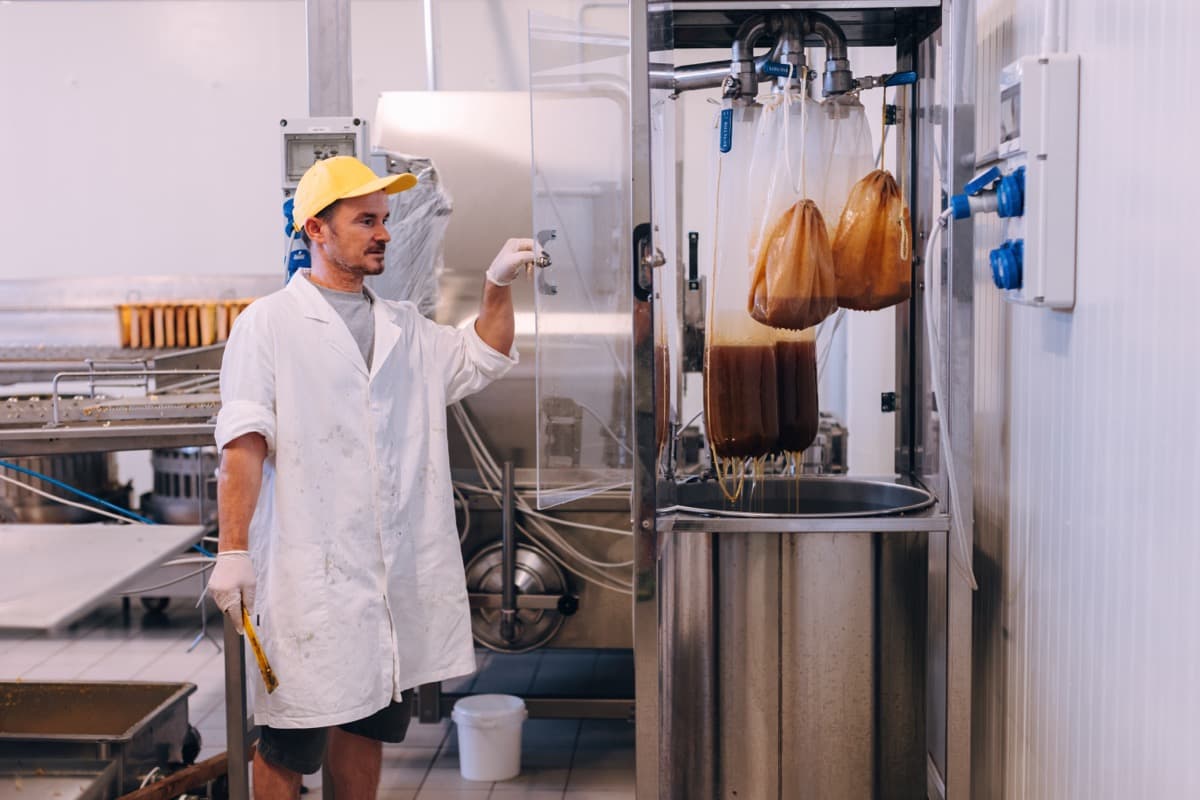
Total liabilities table for Honey processing plant
| Year | 1 | 2 | 3 | 4 | 5 |
| Capital (Opening Balance) (Lacs) | 7 | 9.04 | 12.37 | 15.41 | 18.23 |
| Add: Own Capital (Lacs) | 2.05 | – | – | – | – |
| Add: Retained Profit (Lacs) | 1.07 | 2.73 | 4.33 | 5.04 | 5.82 |
| Less: Drawings (Lacs) | – | 0.5 | 1 | 2 | 3 |
| Subsidy/grant (Lacs) | 4 | – | – | – | – |
| Closing Balance (Lacs) | 7 | 9 | 12 | 15 | 18 |
| Term Loan (Lacs) | 5 | 4 | 3 | 1 | – |
| Working Capital Limit (Lacs) | 9 | 9 | 9 | 9 | 9 |
| Sundry Creditors (Lacs) | 6.27 | 6.94 | 7.53 | 7.91 | 8.57 |
| Provisions & Other Liab (Lacs) | 0.4 | 0.5 | 0.6 | 0.72 | 0.86 |
| Total (Lacs) | 27.64 | 29.35 | 32.07 | 34.33 | 36.67 |
Total assets table for Honey processing plant
| Year | 1 | 2 | 3 | 4 | 5 |
| Assets | |||||
| Fixed Assets (Gross) (Lacs) | 11 | 10.56 | 10.56 | 11 | 10.56 |
| Gross Dep. (Lacs) | 1.47 | 2.74 | 3.82 | 4.75 | 5.55 |
| Net Fixed Assets (Lacs) | 9.09 | 7.82 | 6.74 | 5.81 | 5.01 |
| Current Assets | |||||
| Sundry Debtors (Lacs) | 4.7 | 5.38 | 5.84 | 6.15 | 6.67 |
| Stock in Hand (Lacs) | 11.84 | 13.13 | 14.21 | 14.92 | 16.19 |
| Cash and Bank (Lacs) | 2.02 | 3.02 | 5 | 7.46 | 8.79 |
| Total (Lacs) | 27.64 | 29.35 | 32.07 | 34.33 | 36.67 |
Conclusion
The honey processing plant project report outlines the feasibility, design, and implementation of a facility for the production and packaging of hoHoneyThe project is economically viable and has a positive return on investment. The proposed plant is designed to efficiently process raw Honey and produce high-quality, packaged honey products for domestic and export markets.
The project will create employment opportunities and contribute to the growth of the local economy. The plant will comply with all relevant regulations and industry standards to ensure the safety and quality of the final products. Overall, the project has the potential to be a successful and profitable venture.
- Economical Aquaculture: A Guide to Low-Budget Fish Farming
- 15 Common Planting Errors That Can Doom Your Fruit Trees
- How to Make Houseplants Bushy: Effective Tips and Ideas
- Innovative Strategies for Boosting Coconut Pollination and Yield
- Pollination Strategies for Maximum Pumpkin Yield
- The Complete Guide to Chicken Fattening: Strategies for Maximum Growth
- Natural Solutions for Tulip Problems: 100% Effective Remedies for Leaf and Bulb-Related Issues
- Revolutionizing Citrus Preservation: Towards a Healthier, Greener Future
- Natural Solutions for Peony Leaf and Flower Problems: 100% Effective Remedies
- Maximizing Profits with Avocado Contract Farming in India: A Comprehensive Guide
- Natural Solutions for Hydrangea Problems: 100% Effective Remedies for Leaf and Flowers
- The Ultimate Guide to Choosing the Perfect Foliage Friend: Bringing Life Indoors
- From Sunlight to Sustainability: 15 Ways to Use Solar Technology in Agriculture
- The Ultimate Guide to Dong Tao Chicken: Exploring from History to Raising
- The Eco-Friendly Makeover: How to Convert Your Unused Swimming Pool into a Fish Pond
- Mastering the Art of Delaware Chicken Farming: Essentials for Healthy Backyard Flocks
- 20 Best Homemade Fertilizers for Money Plant: DIY Recipes and Application Methods
- How to Craft a Comprehensive Free-Range Chicken Farming Business Plan
- Brighten Your Flock: Raising Easter Egger Chickens for Beauty and Bounty
- How to Optimize Your Poultry Egg Farm Business Plan with These Strategies
- Subsidy for Spirulina Cultivation: How Indian Government Schemes Encouraging Spirulina Farmers
- Ultimate Guide to Raising Dominique Chickens: Breeding, Feeding, Egg-Production, and Care
- Mastering the Art of Raising Jersey Giant Chickens: Care, Feeding, and More
- Ultimate Guide to Raising Legbar Chickens: Breeding, Farming Practices, Diet, Egg-Production
- How to Raise Welsummer Chickens: A Comprehensive Guide for Beginners
- How to Protect Indoor Plants in Winter: A Comprehensive Guide
- Ultimate Guide to Grow Bag Gardening: Tips, Tricks, and Planting Ideas for Urban Gardeners
- Guide to Lotus Cultivation: How to Propagate, Plant, Grow, Care, Cost, and Profit
- Agriculture Drone Subsidy Scheme: Government Kisan Subsidy, License, and How to Apply Online
- Ultimate Guide to Raising Araucana Chickens: Breed Profile, Farming Economics, Diet, and Care
- Bringing Hydroponics to Classroom: Importance, Benefits of Learning for School Students
- Ultimate Guide to Raising Polish Chickens: Breed Profile, Farming Economics, Diet, and Care
- Ultimate Guide to Raising Australorp Chickens: Profile, Farming Economics, Egg Production, Diet, and Care
- Silkie Chicken Farming: Raising Practices, Varieties, Egg Production, Diet, and Care
- Sussex Chicken Farming: Raising Practices, Varieties, Egg Production, Diet and Care
- Homemade Feed Formulations for Livestock: Discover Cost-effective Starter to Finisher Feed Recipes